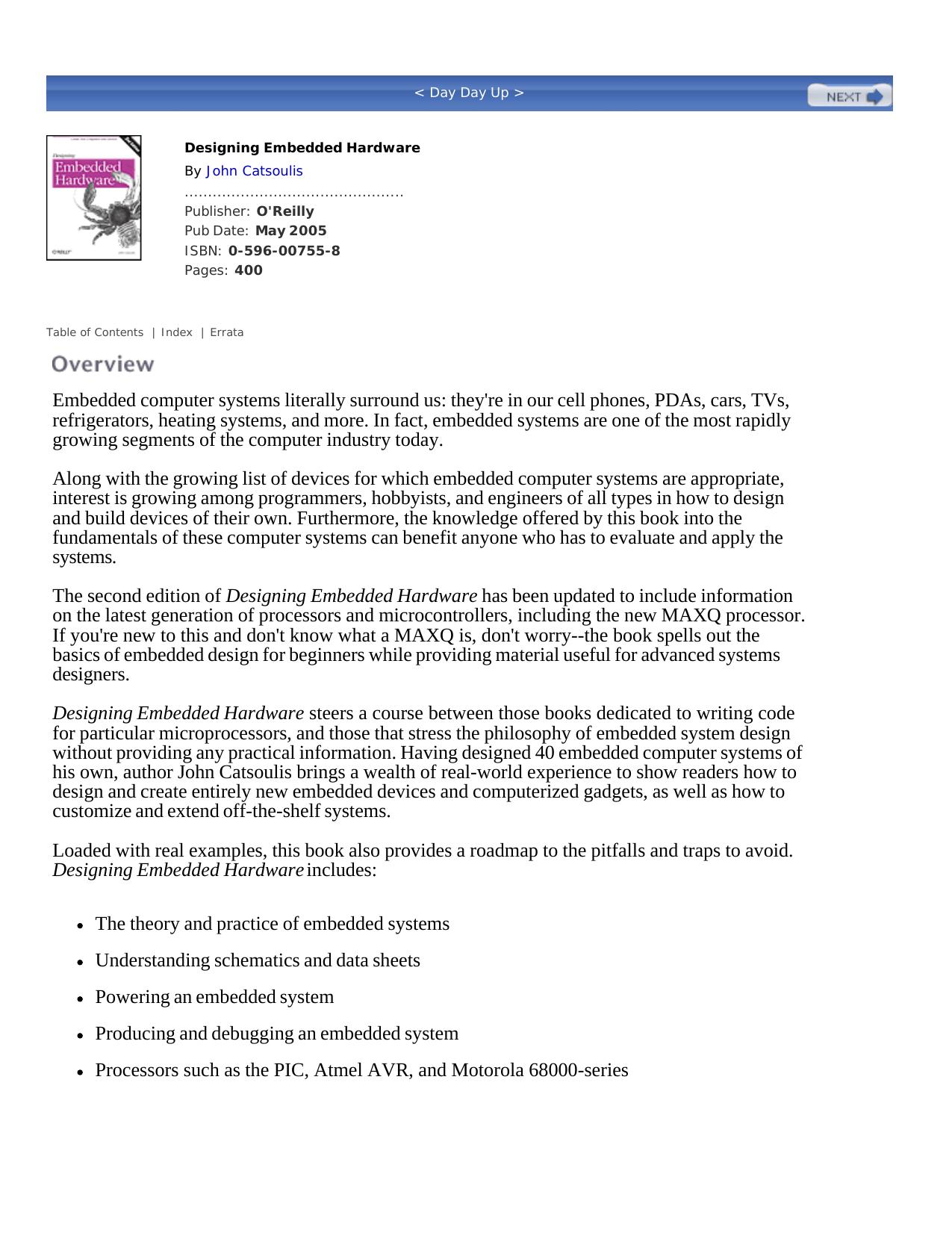Designing Embedded Hardware by John Catsoulis

Author:John Catsoulis
Language: eng
Format: mobi, epub, pdf
Tags: COMPUTERS / Hardware / General
ISBN: 9780596007553
Publisher: O'Reilly Media
Published: 2003-01-02T00:00:00+00:00
Figure 9-5. DTE device connected to a computer
Figure 9-6. DCE device connected to a computer
Manufacturers, when faced with this problem, arbitrarily chose one or the other. The IBM PC has a DTE-type connector, whereas the makers of Unix workstations (such as Sun Microsystems) often choose to make their machines with DCE connectors, since they are more likely to be connected to terminals. To connect a PC to a modem, you need a DTE-DCE cable. To connect a PC to a terminal, you need a DTE-DTE cable. To connect a Sun workstation to a terminal, you need a DCE-DTE cable. To connect a Sun to a modem you need a DCE-DCE cable. To connect a Sun to another Sun, you need a DCE-DCE null modem cable (where Rx and Tx cross over), and to connect a Sun to a PC, you need a DCE-DTE null modem cable. If, however, you need to connect two PCs together, you need a DTE-DTE null modem cable. So, for just two types of device (DTE and DCE), you need six types of cable to cope with the permutations! Variety, as they say, is the spice of life, but it's the bane of RS-232C!
Table 9-1 shows the "standard" connections for RS-232C, for both 25-pin and 9-pin connectors. The signal names are DTE-relative. For example, Tx refers to data being transmitted from the DTE but received by a DCE.
Table 9-1. RS-232C signals
Download
Designing Embedded Hardware by John Catsoulis.epub
Designing Embedded Hardware by John Catsoulis.pdf
This site does not store any files on its server. We only index and link to content provided by other sites. Please contact the content providers to delete copyright contents if any and email us, we'll remove relevant links or contents immediately.
What's Done in Darkness by Kayla Perrin(25501)
Shot Through the Heart: DI Grace Fisher 2 by Isabelle Grey(18220)
Shot Through the Heart by Mercy Celeste(18160)
The Fifty Shades Trilogy & Grey by E L James(17777)
The 3rd Cycle of the Betrayed Series Collection: Extremely Controversial Historical Thrillers (Betrayed Series Boxed set) by McCray Carolyn(13189)
The Subtle Art of Not Giving a F*ck by Mark Manson(12913)
Scorched Earth by Nick Kyme(11833)
Stepbrother Stories 2 - 21 Taboo Story Collection (Brother Sister Stepbrother Stepsister Taboo Pseudo Incest Family Virgin Creampie Pregnant Forced Pregnancy Breeding) by Roxi Harding(11040)
Drei Generationen auf dem Jakobsweg by Stein Pia(10217)
Suna by Ziefle Pia(10186)
Scythe by Neal Shusterman(9263)
International Relations from the Global South; Worlds of Difference; First Edition by Arlene B. Tickner & Karen Smith(8609)
Successful Proposal Strategies for Small Businesses: Using Knowledge Management ot Win Govenment, Private Sector, and International Contracts 3rd Edition by Robert Frey(8419)
This is Going to Hurt by Adam Kay(7696)
Dirty Filthy Fix: A Fixed Trilogy Novella by Laurelin Paige(6453)
He Loves Me...KNOT by RC Boldt(5805)
How to Make Love to a Negro Without Getting Tired by Dany LaFerrière(5378)
Interdimensional Brothel by F4U(5305)
Thankful For Her by Alexa Riley(5162)
